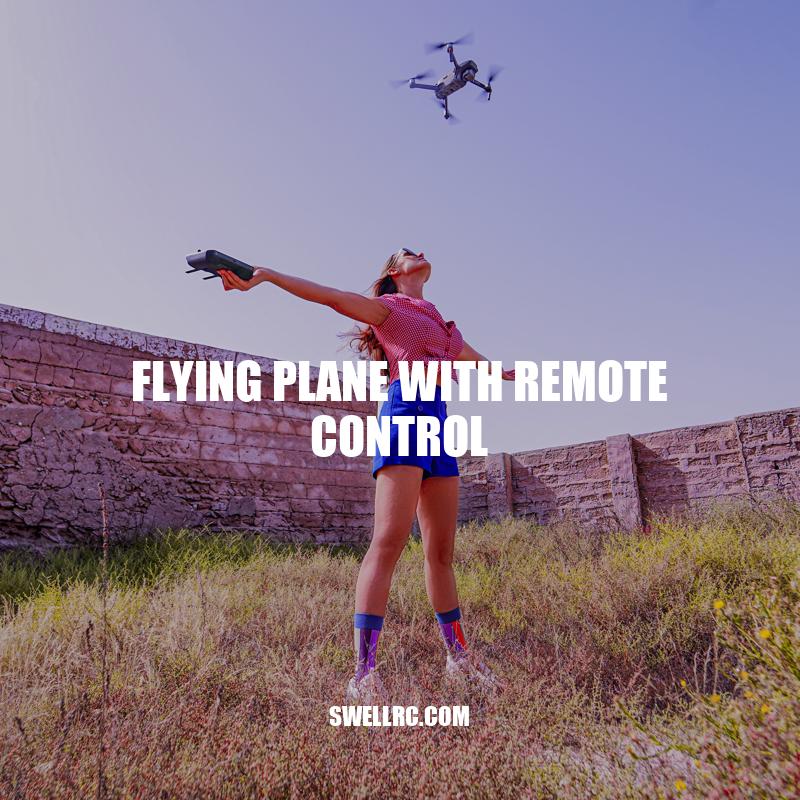Remote-Controlled Flying Planes: A Comprehensive Guide
Remote-controlled flying planes are a popular choice for hobbyists and professionals alike. These planes are an excellent way to enjoy a fun and exciting pastime while improving your hand-eye coordination and learning about advanced technology. Remote-controlled flying planes come in many different types, each with unique features that make them suitable for various uses. They are available in various sizes, materials, and levels of difficulty, allowing you to choose the one that best fits your skill level and interests. With the right preparation and some practice, you can easily learn how to operate a remote-controlled flying plane and take full advantage of everything it has to offer. In this article, we will explore the ins and outs of remote-controlled flying planes, including how they work, preparing to fly, tips for flying, and more.
Demystifying Remote-Controlled Flying Planes
Small remote-controlled flying planes operate using simple control mechanisms, while more sophisticated models use advanced technologies such as gyroscopes and GPS. A typical remote-controlled flying plane consists of various components, including the fuselage, wings, rudder, ailerons, and elevator. The batteries and receiver are also essential components of a remote-controlled flying plane. To operate a remote-controlled flying plane, you generally use a controller or a transmitter, which transmits signals to the receiver on the plane. These signals route to the servos that change the plane’s movements according to the control inputs you make. There is a throttle control on the controller that enables you to control the speeds of the plane. The transmitter also has a switch to turn the plane’s lights on or off, where applicable.
If you are interested in purchasing a remote-controlled flying plane, there are many options available ranging from beginner to expert models. HobbyKing is one popular website that offers a variety of remote-controlled flying planes and accessories. For example, you could consider the Volantex TrainStar Exchange for a beginner model or the E-Flite Habu 32x DF for a more advanced model.
If you are new to flying remote-controlled planes, it is essential to start with a beginner model and learn how to operate it correctly. You should also familiarize yourself with the rules and regulations for flying remote-controlled planes in your area. For example, the Federal Aviation Administration (FAA) has specific guidelines for operating remote-controlled planes in the United States.
In summary, remote-controlled flying planes offer a fun and exciting way to experience aviation and learn about flying. Understanding the components of remote-controlled planes and how to operate them is essential for a safe and enjoyable experience. Consider purchasing a beginner model from a reputable brand such as HobbyKing, and be sure to follow all rules and regulations for remote-controlled plane operation in your area.
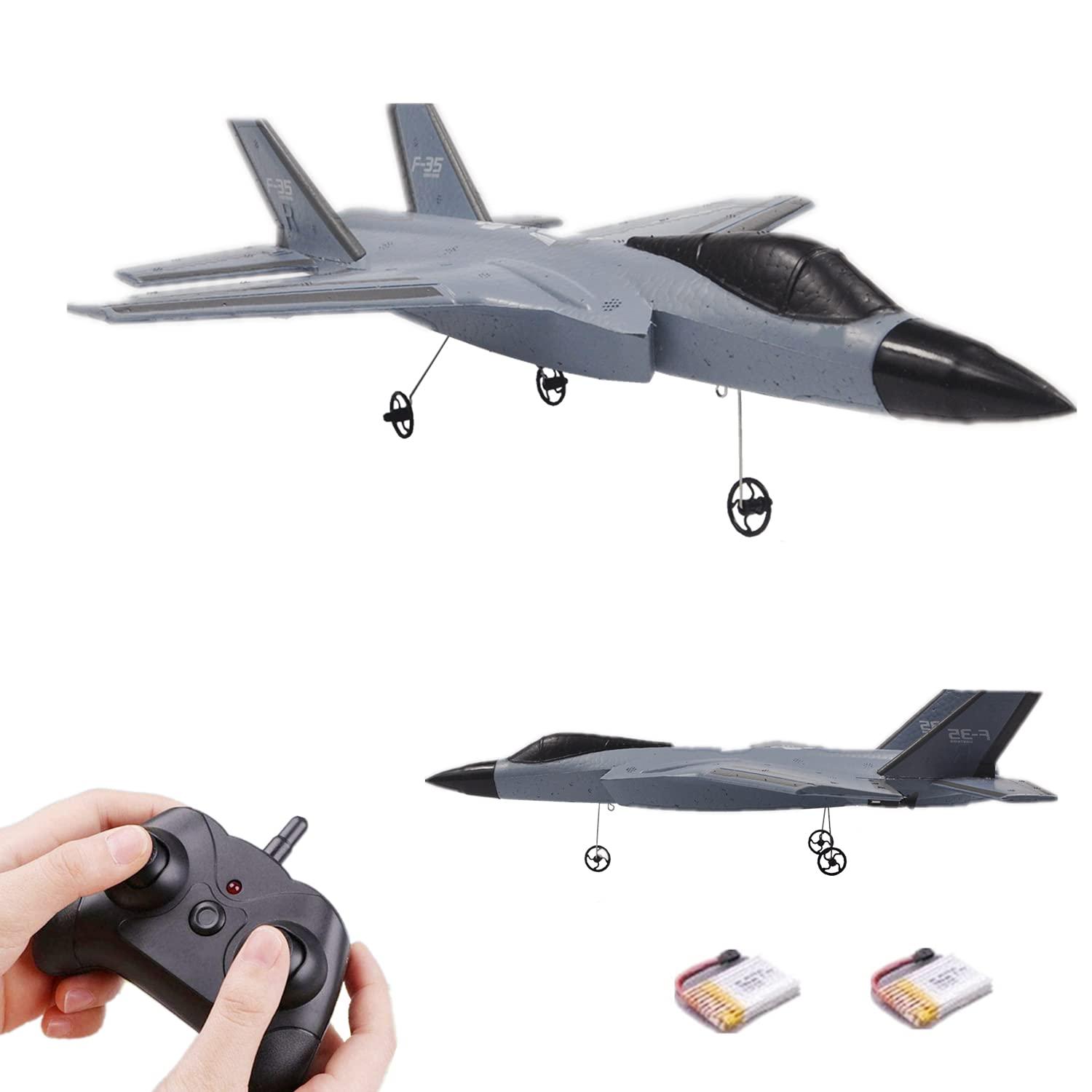
What are some reputable websites that offer remote-controlled flying planes and accessories?
Some reputable websites that offer remote-controlled flying planes and accessories are Horizon Hobby, HobbyKing, and Tower Hobbies.
Types and Sizes of Remote-Controlled Flying Planes
Remote-controlled flying planes come in different types, ranging from indoor planes to outdoor planes and from beginner models to professional ones. There are also various sizes and materials used in making remote-controlled planes. Some interesting facts about remote-controlled flying planes include:
| Type of Remote-Controlled Flying Plane | Description |
|---|---|
| Indoor Remote-Controlled Flying Planes | These planes have a small size suitable for indoor flights and limited outdoor flights |
| Outdoor Remote-Controlled Flying Planes | These planes are built to withstand outdoor weather conditions and are generally larger |
| Beginner Remote-Controlled Flying Planes | These planes are designed to be easy to fly and control, with safety features to prevent crashes |
| Professional Remote-Controlled Flying Planes | These planes have more advanced technology and features, such as GPS capabilities and more responsive controls, making them suitable for competitive flying |
| Size | Remote-controlled flying planes range in size from small enough to fit in the palm of your hand to larger models with wingspans of up to 12 feet |
| Materials | Remote-controlled flying planes can be made from a range of materials, including foam, balsa wood, carbon fiber, and plastic |
The variety of sizes and types make remote-controlled flying planes a popular hobby for individuals of all ages. Additionally, there’s a wide range of websites dedicated to remote-controlled flying planes, including forums to connect with other enthusiasts, online shops to purchase equipment and parts, and video channels with tips and tricks for flying and maintaining planes. Some popular brands of remote-controlled flying planes include Horizon Hobby, HobbyKing, and Great Planes.
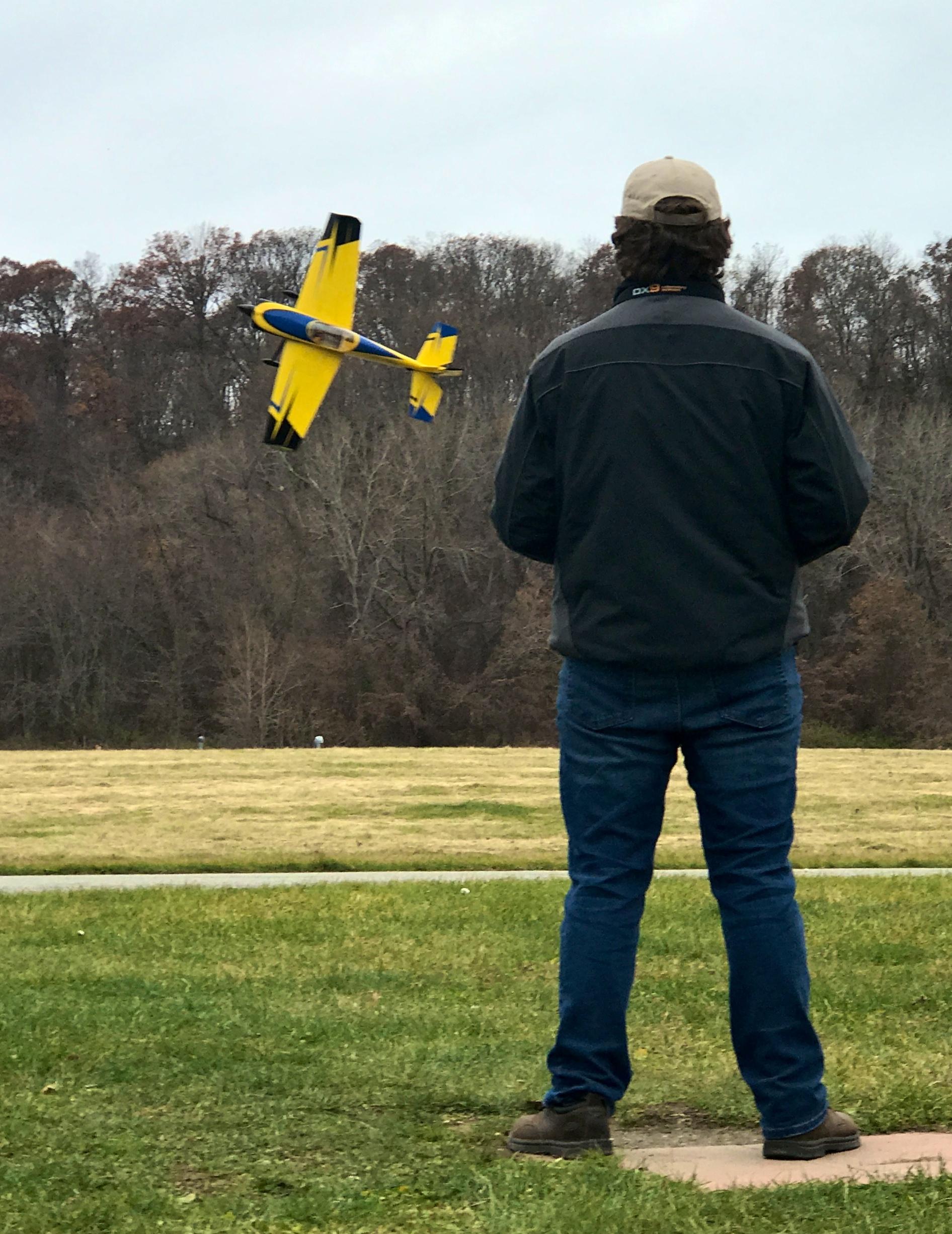
What are some popular websites and brands for remote-controlled flying planes?
Some popular websites and brands for remote-controlled flying planes are Horizon Hobby, HobbyKing, and Amazon.
Pre-flight checklist for safe and successful remote-controlled flying.
Before flying a remote-controlled flying plane, it’s important to prepare properly to ensure the safety of yourself and others. Some important steps to take include:
- Choose a suitable flying location, with enough open space and no obstructions or hazards nearby
- Check the weather conditions to ensure it’s safe for flying and avoid flying in high winds or stormy weather
- Ensure you have all the necessary equipment, including spare batteries and tools for repairs
- Inspect the remote-controlled flying plane thoroughly before flying, checking for any damages or issues that need to be fixed before takeoff
- Ensure you have a clear line of sight to the remote-controlled flying plane at all times during the flight
Some of the essential tools and equipment needed for remote-controlled flying planes include:
- Remote control transmitter
- Receiver board
- Battery pack
- Servos
- ESC (Electronic Speed Controller)
- Propellers
- Charger
- Spare parts and materials for repairs
Websites such as Amazon and HobbyKing offer a range of products for remote-controlled flying planes, including pre-built planes, individual components, and starter kits for beginners. Many websites also offer resources for learning how to fly and maintain remote-controlled flying planes safely and effectively.

What are some essential tools and equipment needed for remote-controlled flying planes?
Some essential tools and equipment needed for remote-controlled flying planes include a transmitter, receiver, battery, motor, servo, and propeller.
Tips for Flying a Remote-Controlled Flying Plane
Flying a remote-controlled flying plane can be challenging, but with the right techniques and practices, it can become a rewarding experience. Here are some best practices for flying a remote-controlled flying plane:
- Start with basic maneuvers when learning to fly, such as takeoff, landing, and slow turns
- Gradually increase the difficulty of maneuvers as you become more comfortable and confident in flying
- Pay attention to the wind conditions, as strong winds can make it difficult to control the remote-controlled flying plane
- Adjust the controls and settings of the remote-controlled flying plane to optimize its performance for your flying style
- Practice regularly to improve your skills and maintain your equipment properly to ensure it stays in good condition
When flying a remote-controlled flying plane in windy conditions, it’s important to take some extra precautions to ensure safe and effective flight:
- Choose a flying location with plenty of open space and no obstacles or hazards
- Adjust the flight speed and trajectory to compensate for the wind direction and strength
- Use fast and sharp turns to avoid being blown off course or losing control
- Avoid flying the remote-controlled flying plane too high, as winds can be stronger at higher altitudes
- Pay attention to your distance from the remote-controlled flying plane at all times to avoid losing sight of it in strong winds
Websites such as RCGroups and FliteTest offer resources and forums for learning and discussing best practices for flying remote-controlled flying planes. Additionally, many remote-controlled flying plane manufacturers offer instructional videos and guides for optimizing and adjusting their products for the best flying experience.
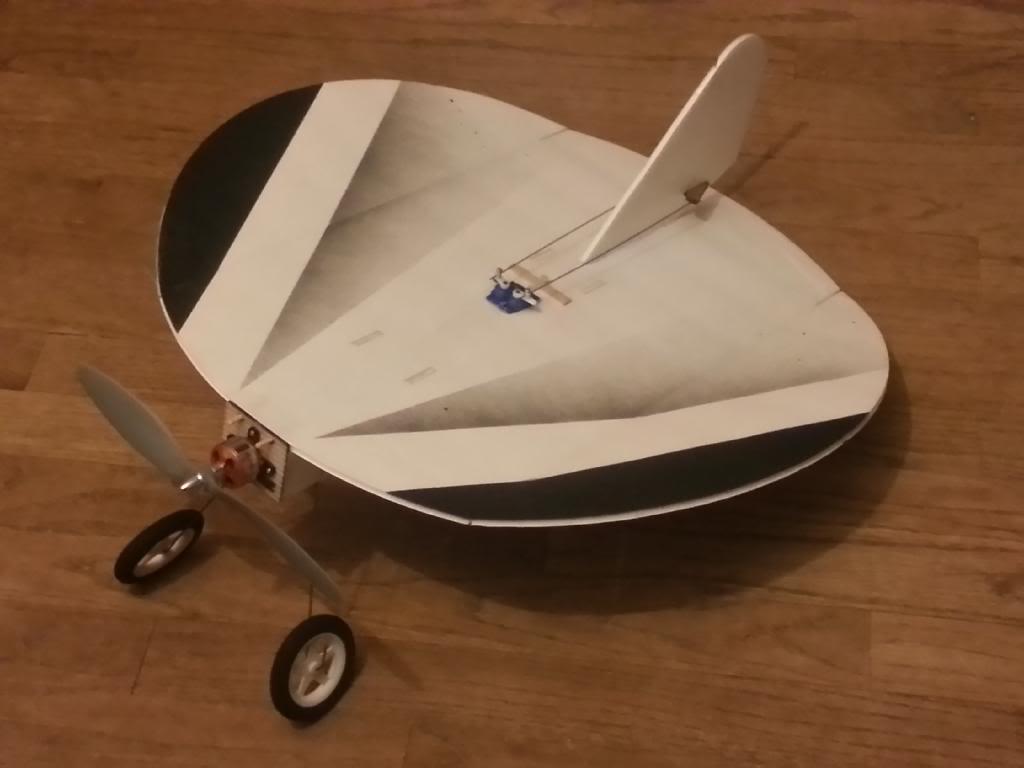
What are some tips for flying a remote-controlled flying plane in windy conditions?
Some tips for flying a remote-controlled plane in windy conditions include choosing a plane with a high wing loading, using a heavier battery for added stability, adjusting the control surfaces to compensate for wind, and flying into the wind rather than with the wind.
Common Issues and Troubleshooting Tips for Remote-Controlled Flying Planes
While flying a remote-controlled flying plane is generally a fun and exciting experience, there are some common issues that can arise, such as:
- Lost connection to the remote control
- The plane crashes or loses control mid-flight
- Battery or motor issues causing the plane to fail or not lift off
Fortunately, many common issues with remote-controlled flying planes can be diagnosed and resolved by following these troubleshooting tips:
- Check the battery to ensure it’s fully charged and not damaged or bloated
- Inspect the motors and wiring for damage or loose connections
- Ensure that the propeller is securely attached and in good condition
- Check the remote control to ensure it’s properly calibrated and connected to the plane
- Verify that all controls and settings are properly adjusted and configured for the specific plane model
If you’re unable to diagnose or fix the issue yourself, it’s important to seek outside help, such as contacting the manufacturer for assistance or bringing the remote-controlled flying plane to a professional repair shop.
There are also many online resources available for troubleshooting and fixing common issues with remote-controlled flying planes. Websites such as RCGroups and FliteTest offer forums and communities where users can discuss and learn from one another’s experiences and advice. Additionally, many manufacturers offer instructional videos and guides for troubleshooting and fixing common issues with their products.
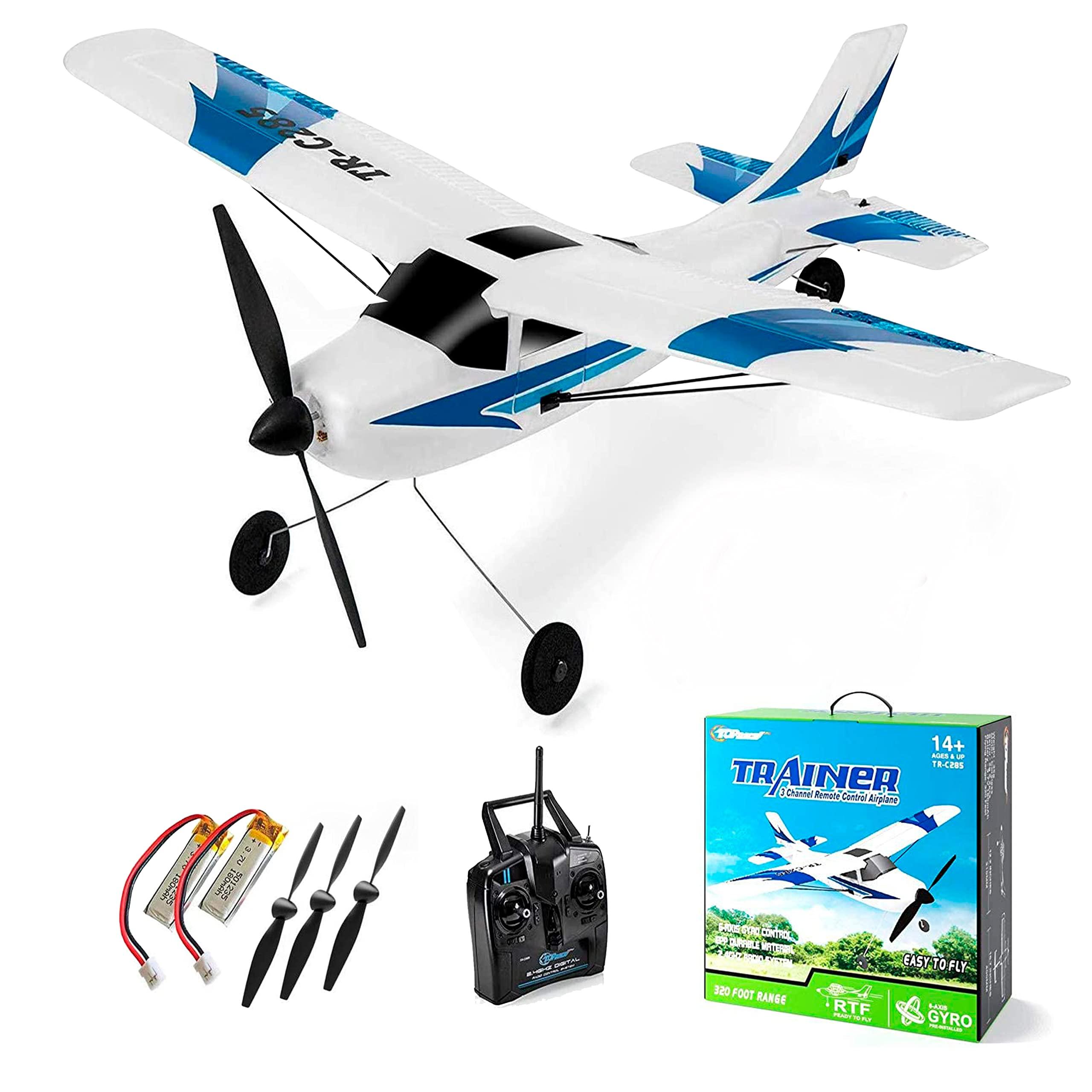
What are some online resources for troubleshooting common issues with remote-controlled flying planes?
Some online resources for troubleshooting common issues with remote-controlled flying planes include forums such as RCGroups.com and RC Universe, YouTube channels such as FliteTest and FlightLineRC, and manufacturer websites such as Horizon Hobby and HobbyKing.
Conclusion and Final Thoughts
In conclusion, flying a remote-controlled plane can provide hours of exciting entertainment, as well as educational and social benefits. With the proper preparation and caution, one can enjoy the experience of flying a remote-controlled plane without any negative consequences. Remember to always follow safety guidelines before taking off and always fix any damages or issues before flying again.
When it comes to purchasing a remote-controlled plane, it’s important to do the proper research beforehand. There is a wide variety of models available on the market today, which can make it difficult to discern which one is best for your needs and experience level. Reading online reviews from other hobbyists or consulting with a specialist can assist you in making an informed decision.
Overall, flying a remote-controlled plane is an exhilarating and satisfying hobby. It offers a unique blend of technical and creative challenge that attracts a diverse range of people. Whether you’re looking for a fun way to pass the time, a new hobby that will continue to grow your knowledge, or an exciting new challenge to share with friends and family, remote-controlled planes are worth considering.

